Shop with confidence! We've Got You Covered with 90-day Returns.
Shop with confidence! We've Got You Covered with 90-day Returns.
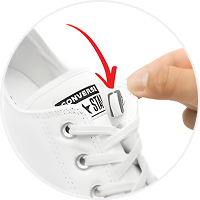
Flat Elastic Laces
No-Tie Shoelaces
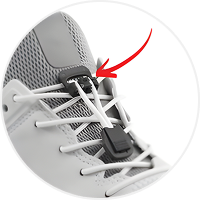
Round Elastic Laces
No-Tie Shoelaces
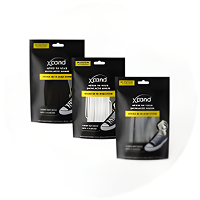
Flat Laces Bundle
5% Pack Savings

Round Laces Bundle
5% Pack Savings

Cushioned
No-show Socks
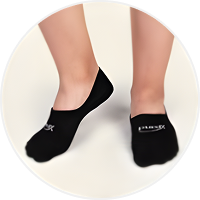
Lightweight
No-Show Socks
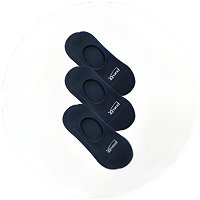
Cushioned Bundle
5% Pack Savings
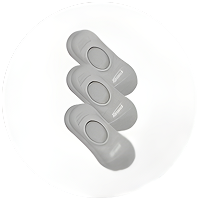
Lightweight Bundle
5% Pack Savings
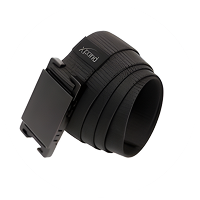
Magnetic Aluminum Urban
Elastic Belt
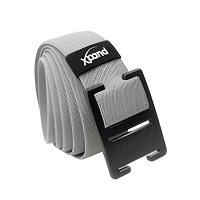
Aluminum Explorer
Elastic Belt
 0
0
BIGGEST DEAL OF 2025 - Use Code 'BFCM30'
Free shipping on orders over $35
See All Offers
All Offers
BIGGEST DEAL OF 2025 - Use Code 'BFCM30'
Black Friday / Cyber Monday is officially live at Xpand.
Get VIP early access to our biggest sale of the year - it doesn’t get better than this.
Use code BFCM30 and save big on no-tie laces, socks, belts, apparel and shoe wipes.
Don’t wait - these deals move fast!
Limited time only while quantities last.
Free shipping on orders over $35
Enjoy free tracked delivery on orders of $35 or more (after discounts).
1/5
Shop with confidence! We've Got You Covered with 90-day Returns.
No-Tie Elastic Laces
Slip on & off your shoes with ease
No-Show Socks
Designed to hide in your shoes, without sliding
Elastic Belts
Stretchy belt strap for perfect comfort
Best Seller Packs
Enjoy an extra 5% pack savings

January 22, 2018
Tying Your Shoes During Pregnancy
Pregnancy is a special time for women, full of wonder and anticipation for their new bundle of joy. Many women excitedly watch their belly grow and embrace the numerous changes pregnancy brings to their bodies. Along with the beautiful changes — such as feeling the baby kick and having amazing hair, skin and nails — come some not-so-welcome changes, such as swollen ankles and feet, clumsiness and the decreased ability to bend and stretch.
These changes typically show up during the third trimester of pregnancy, when many women begin to have difficulty performing everyday tasks such as getting out of bed, bending over and putting on their shoes. Since most women remain quite active during their pregnancy — with exercising, raising other children, working and managing a household — the ability to get dressed and put on footwear quickly and independently is a must.
Trouble bending over, coupled with swollen feet, makes finding comfortable pregnancy shoes difficult. While there are many shoe styles available, from flip-flops to boots, the safest shoes for pregnant women are tennis shoes. Although in the past, tennis shoes required bending down to put on and tie, this is no longer an issue thanks to Xpand laces. These stylish shoelaces are designed to turn any tennis shoe into a safe and secure slip-on without the hassle of staying bent over and tying. In fact, you can actually lace your shoes with Xpand Lacing System and potentially eliminate the need to bend over all together!

Tying Shoes During the Third Trimester
The third trimester of pregnancy is the “home stretch,” if you will, when most women start to get excited about the arrival of their baby. You may find weight gain and an ever-growing belly have affected your balance and changed your center of gravity. Your flexibility and range of motion may also be drastically reduced. You may also find yourself with other symptoms, such as being easily winded and having an aching back and swollen feet.
Just as no two women are alike, no two bellies are alike. While all women carry their pregnancies differently, most carry the bulk of their weight in the front. Belly size depends upon a multitude of factors, such as a woman’s general size and weight before pregnancy, the size of the baby and whether she is carrying multiples. The more space a woman's belly takes up, the less likely she can bend down easily.
Bending over in the third trimester can throw off your balance and cause a dangerous fall. Bending and lifting from the waist can also cause strain on the lower back muscles and result in pain. Deep bending puts pressure on the stomach, worsening heartburn. The third trimester is when most women find it increasingly difficult to bend at the waist. When you can't bend down, it naturally limits some of the things you can do for yourself.

While pregnancy does have its perks, such as getting out of cleaning the litter box, the inability to put on shoes independently isn’t one of them. While it still may be possible for you to do this task independently during your third trimester, it isn’t the norm. For most pregnant women, it entails a 15-minute ordeal ending in discomfort and frustration. Many women end up having to ask for help, or using unsafe methods — such as leaning on unsecured objects or wearing ill-fitting shoes — to remedy the problem.
Creative Ways to Attempt Tying Shoes During Pregnancy
A wise person once said, “Necessity is the mother of invention” — pun intended. Never is this truer than watching the various and creative ways a pregnant woman finds to attempt to tie her shoes. From contorting one's legs like a pretzel to cutting shoelaces entirely out of the picture, the most common methods are:
- Foot crossed over knee —This maneuver entails sitting down on a bed or chair and pulling your foot toward your opposite knee to put on and tie your shoes. This is not very easy to do when you have a large baby belly in the way, and many women find it impossible to reach their foot that far. Those who do often experience extreme discomfort while doing so.
- The foot hoist —This technique involves hoisting your foot up onto a raised surface, like a bed, chair or staircase, to tie your shoe. Let’s face it, lifting your leg up while pregnant is very difficult when you have swollen feet and a bulky belly. This method can also be very unsafe, since a dangerous fall can occur if your foot is resting on an unsecured object that could slide or topple, such as a chair or other light furniture.
- Asking for assistance —This method is usually the very last resort for most women, and involves another person putting on and tying your shoes for you. While most people are happy to help, admitting defeat can leave you feeling inadequate and helpless. This method may also take up more time in the long run, which is not an effective option for pregnant women with busy lifestyles who need to get out of the house quickly.
- Shoelace avoidance —Some women find it easier to avoid shoes with shoelaces altogether, opting for slip-on varieties such as clogs, flats or flip-flops. While this can sometimes be a feasible option, we will discuss shortly why these types of shoes aren’t always the best choice for safety and comfort purposes.
The Joys of Swollen Feet
If you can make it through your entire pregnancy without having swollen feet, you are a fortunate woman indeed. Minor swelling of hands, feet and ankles is a normal part of most pregnancies. Only about one in four women will not experience swollen feet during pregnancy. Most of us get the pleasure of walking around on sore, puffy pads that resemble feet. For most women, foot swelling usually begins around weeks 22 to 27, and lasts through to the end of the pregnancy.

Gathering of fluids in a pregnant woman’s body tissues leads to edema, or swelling, of the feet and ankles. Increased blood flow and the weight of this fluid, along with that of the growing baby, puts pressure on the vena cava and pelvic veins. While mild foot swelling is uncomfortable, it’s usually harmless. Sudden, excessive swelling often indicates a more serious condition such as preeclampsia and needs to be immediately addressed by a physician.
If you feel like your feet have grown, you're correct. The loosening of foot ligaments causes the foot bones to spread out, making feet larger. It's not unusual for a woman's feet to increase by a half or full shoe size. They may also become wider, and your arch may get smaller. While some women's feet will return to their pre-pregnancy size, for many the change is permanent.
Wearing comfortable shoes with the Xpand System can alleviate the discomfort of swollen feet thanks to the forgiving, stretchable laces. Shoes you would normally wear may not provide the necessary comfort with the standard laces included, and many women face the dilemma of finding footwear that is comfortable and fits their ever-swelling feet. Since footwear manufacturers don’t make supportive slip-on shoes for pregnancy, most women must get creative. In these cases, many women do not always make the best footwear choices. Xpand brings more opportunity and options to the table.
Typical Shoes Worn During Pregnancy
Your definition of comfortable maternity shoes will probably vary according to which stage of pregnancy you’re in. In the early stages, you’ll probably be able to get away with wearing your regular shoes, while you’ll have to adapt shoes for the third trimester to your swollen feet and changed center of gravity. Appropriate shoes for all stages of pregnancy are flexible, stable and snug — but not tight — in the middle and heel.

Slip-on maternity shoes are the easiest, but not always the most comfortable, fashionable or safest option. Not all slip-on shoes are appropriate for all seasons and activity levels, and many don't offer the level of support needed to combat a sore back and swollen, achy feet. Although you may not be able to even see your feet at some point, you still want to be aware of what you put on them, as your footwear choice can mean the difference between comfort or misery.
Types of slip-on shoes women commonly wear during pregnancy include:
- Flip-flops— Flip-flops are one of the easiest types of shoes to put on and off, since they don’t require any bending or lace-tying. They are forgiving of puffy, swollen feet and are easy to kick off at the end of the day. However, flip-flops are not always the best and safest option for pregnant women. They are also not a sensible option for the cold temperatures of a winter pregnancy, and they severely lack in support, which can result in a sprain or fall.

- Clogs— Clogs are an option if you’re planning to visit the Netherlands or wanting to model your wardrobe after your beloved grandmother, but they usually look frumpy and outdated. Clogs are convenient and easy to slip on and off without bending, since they have low or no backs, but for this reason, they can also be dangerous for pregnant women. Sprains and falls can occur if the shoe accidentally slips off.
- Flats— Another go-to shoe style for pregnant woman is the flat. They are easy to slip on and off and can stretch to accommodate swollen feet, but while flats are a convenient option for going out, they're not ideal for much else. While they may be stylish to wear to work, they offer little support for long hours. Flats are also not suitable for being active and exercising, since they easily fall off your feet with vigorous activity.
- Boots— Boots are a stylish and versatile part of many women’s wardrobes. They're available in slip-on versions and even with flat soles. While boots may be an option for some pregnant women, for others experiencing leg and foot swelling, they are uncomfortable and difficult to wear. For summer pregnancies, boots are heavy and hot, not to mention how silly they look with shorts.
The Benefits and Challenges of Wearing Tennis Shoes During Pregnancy
During your entire pregnancy and your third trimester, in particular, it’s extremely important to wear comfortable and safe footwear. In fact, wearing inappropriate footwear contributes to more than 31 percent of falls during the third trimester of pregnancy. Most doctors recommend wearing well-fitting, flat, rubber-soled shoes. Tennis shoes are by far the most supportive pregnancy shoes and offer numerous benefits, both during and after pregnancy.

Tennis shoes are:
- Comfortable —Besides slippers,tennis shoes offer the most comfort of any footwear. Running shoes are usually made of breathable material, and are designed to keep your feet comfortable and dry. Since sweaty feet are an unfortunate side effect of pregnancy, finding shoes that help keep feet cool and dry is essential. Although athletic shoes are made to flex with your feet, many varieties are also available in wider widths to accommodate growing and swelling feet.
- Supportive — Tennis shoes are the most supportive shoes available. Those with rubber soles and memory foam offer back and arch support, and minimize the impact on the feet, legs and back. Flat rubber soles provide the most protection against slips and falls, and can help pregnant women feel more balanced and stable. They are also designed to hug your foot and stay on securely.
- Suitable for all seasons —Athletic shoes are appropriate for winter, spring, summer and fall. They are versatile and available in a variety of styles that adapt to the seasons. Features such as lightweight or heavy fabric, waterproof material and both high- and low-profile shafts offer pregnant women many potential choices.
- Stylish —With the numerous styles of tennis shoes available today, you can still look cute and stylish while rocking your baby bump. Footwear manufacturers group athletic shoes into many categories, such as running, sports casual and fashion, to name a few. They go with many different wardrobe styles and are appropriate for both professional and casual settings.
- Good for activity —Whether you’re taking an exercise class or running after a toddler at the park, athletic shoes are ideal for women who live active lifestyles. Since exercising and staying active are important to a healthy pregnancy, the right shoes can help you achieve this. Tennis shoes can alleviate mildly swollen feet and are ideal for active pregnant women who are always on the move.
Although athletic shoes are a perfect footwear option, some women may find it difficult to wear tennis shoes during pregnancy due to their feet being too swollen or their inability to bend over to put on and tie their shoes. Standard shoelaces require tying and don’t allow tennis shoes to sufficiently flex and stretch to accommodate swollen feet. They also create pressure and discomfort by pressing on the tops of feet.
Turning Your Tennis Shoes Into Slip-Ons
The Xpand Lacing System consists of stretchy elastic shoelaces and sturdy lace anchors that allow you to slip your tennis shoes on and off easily. With adjustable tension and a variety of lacing patterns designed to ensure a perfect and comfortable fit, the Xpand Lacing System is ideal for pregnant women of all shapes and sizes. These shoelaces are designed to eliminate the difficulties associated with wearing tennis shoes during pregnancy.

Benefits of the Xpand Lacing System include:
- Turns tennis shoes into safe slip-ons —With the Xpand Lacing System, you can turn any athletic shoe into a pair of no-tie slip-ons. The sturdy lace anchors ensure your laces will stay snug and secure. You can buy your favorite brand and style of athletic shoes and turn them into safe slip-ons.
- No need to tie them —Since tying shoes is a difficult and sometimes impossible feat for a pregnant woman in their third trimester, the no-tie feature of Xpand Laces is beneficial. Not only do they enable pregnant women to maintain their independence, but they also help them save precious time by eliminating the need for tying.
- No need to bend over —Since bending is also difficult and unsafe during the third trimester of pregnancy, the Xpand Lacing System eliminates the need for pregnant women to bend down to both put on and tie their tennis shoes. Not having to bend helps alleviate issues such as back strain, heartburn and falls.
- Adjustable —Xpand Laces are flexible and adjustable, which allows your tennis shoes to expand with your foot. They alleviate foot pain and swelling, since the laces don’t create pressure points. A variety of comfort patterns and lacing methods are available to ensure a proper fit. Since one size fits all, you can continue to use them even after your pregnancy.
- Stylish and available in a variety of colors —Xpand Laces are both functional and stylish. With more than 40 colors available, from bold colors and pastels to camouflage and rainbow, you’re sure to find a set of Xpand Laces that will look great with your favorite tennis shoes. Since they’re also incredibly affordable, you can get a different set for each pair.
Post-Pregnancy Benefits
While Xpand Laces are ideal for women in their third trimester of pregnancy, they are just as beneficial afterward. New mothers face a variety of challenges, including post-pregnancy body changes, adjusting to a new schedule and managing the demands of caring for a new baby. Xpand Laces can help new moms by saving them time and allowing them to slip their favorite tennis shoes on and off easily.

Although many of the symptoms and body changes that occur during your pregnancy fade quickly, some other take awhile to subside. For women who experienced foot swelling, it may take awhile for your feet to return to normal, and they may even stay a larger size. Xpand laces allow you to wear your favorite tennis shoes and will comfortably adjust to post-pregnancy foot changes that occur.
Ask any new mother what she desires most, and after sleep, she will most likely mention time. New babies are a lot of work and are often on a schedule of their own. Moms must find a way to work errands and trips to the doctor and grocery store between naptimes and feedings. Since Xpand Laces are no-tie, moms won’t have to waste time on tying shoes. When you have a new baby with an accurate three-hour belly clock, every moment counts.
Spending less time getting yourself ready equals more time with your baby. Whether that involves feedings, playtime or getting them prepared for outings, you’ll always need and appreciate the extra time in your day. Besides, you’ll probably have tons of other things to focus on — like getting your baby on a set schedule, parenting your older children and adjusting the household to the newest member of the family.

Also in Xpand Blog
CART (0)
✕ SELECT LACES, SOCKS & SHOEWIPES
4 for $40
6 for $50
8 for $60
FREE SHIPPING ON ORDER $35 AND UP
Your Cart is Empty
Continue Shopping"no-tie-original-elastic-lacing-system","quick-release-round-lacing-system","cushioned-no-show-socks","original-notie-lacing-system","xpand-quick-wipes-pack-of-2","cushioned-socks","free-xpand-quick-wipes","quick-wipes-10pcs","original-notie-lacing-system-v4","original-notie-lacing-system-lp-v6-1","original-notie-lacing-system-lp-v6-2","original-notie-lacing-system-lp-v5-2","original-notie-lacing-system-lp-v4-2","original-notie-lacing-system-lp-v3-2","original-notie-lacing-system-lp-v2-2","original-notie-lacing-system-lp-v1-1","original-notie-lacing-system-lp-v5-1","original-notie-lacing-system-lp-v4-1","original-notie-lacing-system-lp-v3-1","original-notie-lacing-system-lp-v2-1","original-notie-lacing-system-lp-v1-2","cushioned-no-show-socks-copy","cushioned-no-show-socks-copy-copy","ankle-socks","original-notie-flatlaces-3-pack","glow-in-the-dark-flat-laces","freebie-no-tie-laces-black-reflective","lightweight-socks","freebie-no-tie-laces-flat-white",
"no-tie-original-elastic-lacing-system","lightweight-no-show-socks","original-notie-lacing-system","original-notie-lacing-system-v4","original-notie-lacing-system-lp-v6-1","original-notie-lacing-system-lp-v6-2","original-notie-lacing-system-lp-v5-2","original-notie-lacing-system-lp-v4-2","original-notie-lacing-system-lp-v3-2","original-notie-lacing-system-lp-v2-2","original-notie-lacing-system-lp-v1-1","original-notie-lacing-system-lp-v5-1","original-notie-lacing-system-lp-v4-1","original-notie-lacing-system-lp-v3-1","original-notie-lacing-system-lp-v2-1","original-notie-lacing-system-lp-v1-2","original-notie-flatlaces-3-pack","glow-in-the-dark-flat-laces","freebie-no-tie-laces-black-reflective","freebie-no-tie-laces-flat-white",
{ id: null, shopify_product_id: "2009897304175" },{ id: null, shopify_product_id: "2020196581487" },{ id: null, shopify_product_id: "4166139019375" },{ id: null, shopify_product_id: "4167617937519" },{ id: null, shopify_product_id: "7470282244207" },{ id: null, shopify_product_id: "14673415733611" },{ id: null, shopify_product_id: "14703821259115" },{ id: null, shopify_product_id: "14730153296235" },{ id: null, shopify_product_id: "14736987980139" },{ id: null, shopify_product_id: "14736989585771" },{ id: null, shopify_product_id: "14736990667115" },{ id: null, shopify_product_id: "14736991748459" },{ id: null, shopify_product_id: "14736993517931" },{ id: null, shopify_product_id: "14737004593515" },{ id: null, shopify_product_id: "14737006035307" },{ id: null, shopify_product_id: "14737006133611" },{ id: null, shopify_product_id: "14737007116651" },{ id: null, shopify_product_id: "14737008296299" },{ id: null, shopify_product_id: "14755288744299" },{ id: null, shopify_product_id: "14755288777067" },{ id: null, shopify_product_id: "14755289006443" },{ id: null, shopify_product_id: "14766251213163" },{ id: null, shopify_product_id: "14776631427435" },{ id: null, shopify_product_id: "14791250149739" },{ id: null, shopify_product_id: "14846692196715" },
3--1.79
6--2.39
7--2.99
9--3.59
1--0



